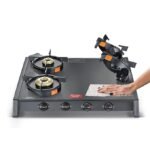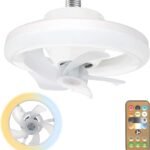Key Features of Wireless Doorbell Kits
Easy Installation: One of the main advantages of wireless doorbells is their simple installation process. With no wiring required, you can mount the doorbell button and place the receiver anywhere within the wireless range. Typically, these doorbells operate through standard batteries, reducing the need for electrical expertise.
Range: Wireless doorbells often have a significant range, typically ranging from 100 feet to over 1000 feet, depending on the model. This allows homeowners to place the receiver in different rooms or floors of a building without worrying about connectivity.
Variety of Sounds: Many wireless doorbell kits come with a variety of chimes and sounds to choose from. You can set different ringtones for different entry points in a house, making it easy to know which door the visitor is at. Some models also offer volume control, allowing for customization based on your preferences.
Expandable Systems: Some wireless doorbell kits are expandable, meaning you can add additional push buttons or receivers as needed. This is especially useful for larger properties or multi-level homes.
Visual Indicators: Many modern wireless doorbells come with built-in LED lights that flash when someone presses the button. This can be especially helpful for people who are hard of hearing or in noisy environments.
Security Features: Some wireless doorbells come equipped with security features such as motion detection, cameras, or even smart connectivity. With a camera-enabled wireless doorbell, users can see who’s at the door via a smartphone app, adding an extra layer of security.
Smart Integration: High-end models can be integrated with smart home systems, allowing you to connect your doorbell with apps like Amazon Alexa or Google Assistant. This lets you answer the door, view camera feeds, or even unlock the door remotely.
Advantages
No Wiring Needed: As mentioned, wireless doorbells don’t require wiring, which means no drilling into walls and no need for professional installation.
Portable: The receiver can be placed anywhere in the home, and many are battery-operated, allowing for easy relocation.
Cost-Effective: Wireless doorbells are generally less expensive than wired models, especially when considering installation costs for wired systems.
Modern Features: Wireless kits are more likely to come with advanced features like motion sensors, cameras, and smart connectivity, giving them an edge in terms of both convenience and security.












